Have you ever dreamed of having your own garden that could provide you with a steady supply of fresh veggies?
Well, dream no more. There are certain types of veggies that you can plant once and harvest forever.
That’s right, no more planting year after year—just a continual cycle of harvesting delicious vegetables for years to come.
Let’s take a look at some of the amazing veggies you can plant once and harvest forever.
Rhubarb
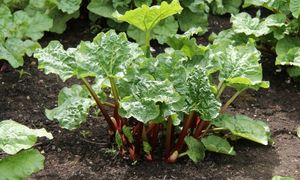 Rhubarb is an incredibly resilient plant. meaning that it can easily withstand winter frosts and other tough weather conditions.
Rhubarb is an incredibly resilient plant. meaning that it can easily withstand winter frosts and other tough weather conditions.
Once planted in well-draining soil, it can provide a harvest of delicious stalks for years on end.
Since rhubarb does not produce seeds, the same plants can be harvested for decades if taken care of properly.
Related: 61 Fruits and Veggies You Can Grow in Buckets
Furthermore, rhubarb only needs to be thinned out occasionally to ensure the right balance between established roots and the growth of tender stalks.
Chives
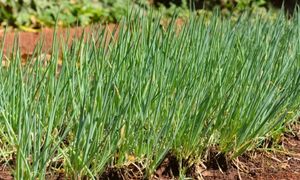 If you’re looking for an easy and rewarding way to bring delicious flavor to your cooking, you can’t go wrong with chives.
If you’re looking for an easy and rewarding way to bring delicious flavor to your cooking, you can’t go wrong with chives.
A unique feature of this hardy herb is that it can be planted once, and then harvested forever.
Its bright green leaves are full of vitamin C and can be enjoyed cooked or raw in many dishes such as omelets, potatoes, fish, and salads.
Chives don’t require a lot of attention – just water, sunshine, and regular harvesting for the maximum flavor payout. If you want the freshest ingredients without babysitting your garden, take a look at adding chives to the mix.
Asparagus
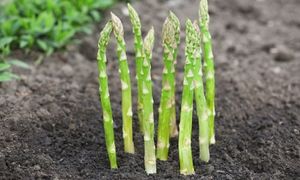 Asparagus is one of the easiest perennials to grow, and harvesting asparagus in your own garden is one of life’s greatest pleasures.
Asparagus is one of the easiest perennials to grow, and harvesting asparagus in your own garden is one of life’s greatest pleasures.
Not only does asparagus taste great fresh off the stalk, but it also stores beautifully when canned or frozen.
Asparagus plants take three years to mature before they can be harvested, so make sure to plan ahead when planting this delicious veggie.
Horseradish
One of the most underrated veggies out there has got to be horseradish. This pungent root vegetable packs a punch in terms of flavor and provides countless health benefits too.
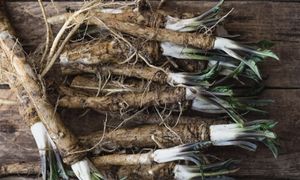
Horseradish grows easily in almost any soil type and spreads like crazy due to its rhizomes.
It can take up to two years for horseradish roots to reach maturity, so keep an eye on them in order for maximum flavor.
Watercress
Watercress is an incredibly versatile veggie that can be used in salads, sandwiches, and soups.
Related: How to Make Portable Soup
Watercress is also quite easy to grow; all it needs is consistently moist soil and access to plenty of sunlight.
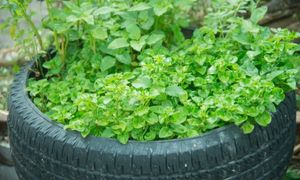
Watercress grows quickly, so it may need thinning every now and again but otherwise, it should thrive without too much effort from you.
Just make sure that when harvesting watercress you do not take too much from one spot.
Kale
Kale is one of those veggies that has become incredibly popular over recent years due to its versatility and nutritional benefits.
Luckily for us gardeners out there, kale is also incredibly easy to care for and maintain.
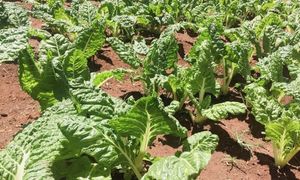
Most of us grow kale as an annual, but in many cases, it can also be cultivated as a perennial.
All it needs is rich soil with good drainage and plenty of sunlight, at least 6 hours per day, and your kale should be growing like crazy in no time.
As far as harvesting goes, simply snip off individual leaves as needed or wait until late fall, when the entire plant will be ready for picking all at once.
Ramps
 If you’ve ever been lucky enough to taste ramps, also known as wild leeks or wild garlic, you know why these are so popular.
If you’ve ever been lucky enough to taste ramps, also known as wild leeks or wild garlic, you know why these are so popular.
Ramps have a garlicky flavor that adds depth and character to everything it touches.
⇒ The Wild Edibles That Will Vanish In A Crisis. Forage Them First!
But unlike regular leeks, ramps come up every spring without needing replanting—so get busy harvesting them while they last.
Walking Onions
 Who doesn’t love walking onions?
Who doesn’t love walking onions?
They produce both green onion tops and underground bulbs, that are delicious if you add them to salads or sauté with other veggies. The best part is, once you plant them, these onions will just keep coming back every year.
Globe Artichoke
Globe artichokes are perennial plants, meaning they come back year after year if you harvest them correctly.
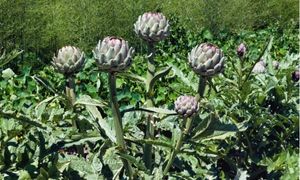
When the flowers have dried up at the end of the season, cut off any side shoots that have formed on the main stem and leave one or two mature heads on each stem as well as some immature heads. This will help ensure that your plant produces more next season.
Jerusalem Artichoke
If you’re looking for something truly unique, then look no further than the Jerusalem artichoke, also known as sunchokes.

These knobby tubers are native to North America and have a nutty flavor reminiscent of artichokes or potatoes.
Growing Jerusalem artichokes is easy; just make sure they get plenty of sun and water during the growing season for optimal results.
Growing your own food has never been easier, so if want to become self-sufficient, here you can learn how to make a year-round self-sustaining garden.
To make sure your perennials thrive, be sure to never harvest too much in any one season. You should also avoid transplanting these veggies since their roots established themselves in soil unsuitable for annual vegetables like tomatoes and peppers.
Be sure to fertilize the soil with organic material like leaf mold or compost before planting and add more throughout the growing season.
Although you’ll only be harvesting once, these plants will still be depleting the soil of nutrients, so it’s important to make sure you’re regularly replenishing it so your plants have everything they need.
With the right preparation and consistent maintenance, you will keep having an annual supply of delicious crops from your very own vegetable garden.
So grab some gardening tools and get started on your veggie patch today—you’ll be reaping the rewards for many harvests to come.
You may also like:
 The Easiest And Cheapest Way To Filter Water With Shungite
The Easiest And Cheapest Way To Filter Water With Shungite
Low-Space DIY Food Projects To Feed You Family In A Crisis (Video)
How To Outfox FEMA In The Upcoming Economic Crisis

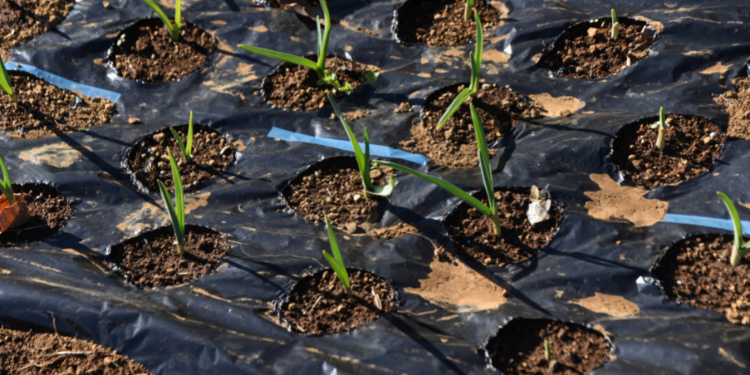




















rhubarb most certainly seeds – mature stand of plants start to multiple by a “mother stalk” shoot – you can plant direct but most common is to pot for an eventual mature crown ….
and in regard to Jerusalem artichokes – they spread like the dickens – you either have an area that is solidly bordered from the root spread or an area that is isolated and the spread won’t interfere with other gardening efforts ….
And I would add that, at least in my and my family’s experience, they are full of fiber (or full of something that causes diarrhea! I love them, but can’t eat them for that reason…
aka: fartichokes
Loralee & ob:
Jerusalem Artichokes’ inulin (the ‘fart’ causing ingredient), can be minimized simply by either fermenting them (pickling) or by boiling them in an acid like lemon/lime juice or Apple Cider vinegar.
Plus, to avoid the diarrhea, just don’t eat too many.
RAMPS! Soooo delicious ?
WOW….Lost my Ramps in the move. Where can I purchase some starts
Thanks, Jeanine
Very well done.This is the kind of article that we need more of.
If the trolls start with the stupid comments ignore them.
I’ll handle the rebuttal.
They forgot blueberries and raspberries.
Blueberries and raspberries aren’t vegetables.
A nice list of perfect little taste treats to pluck from the nooks of a small city garden. Thank you Rebekah!
I planted sunchokes just yesterday. I tried two years ago but they never did anything. I think it was extremely poor soil though. I had a pond dug and it was the dirt dug out of it. I planted this time in an area far from my garden spot and in good soil. I’ll try some of the other crops listed here as well. Good article.
It is not a vegetable but if you have the ground to plant a variety of edibles add Paw-Paws to the list. With them you need to plant 3+ trees because they don’t self pollinate and there are male and female trees. Also, Paw-Paws aren’t pollinated by bees. They are pollinated by flies. I planted them on my last property and made sure I told the new owners about them so they didn’t cut them down.
Folks, plant and elderberry bush if they can grow in your zone. I’m fortunate enough to live where they grow wild. Multiple uses and it’s an amazing ant viral that allowed us to ride the covid scare with none of us getting seriously ill while others in my family tested positive for the antibodies but never got sick. Makes a great addition to other berry preserves that get put up here in the NM mountains. Folks, please share other remedies, supplements that you know helped keep yours safe and healthy. SG
I planted 3 thornless blackberry bushes several years ago. Every year since they’d send runners out 3 feet and another bush would pop up. Now they’re threatening to invade the garden…but they sure taste good.
We have the invasive thorny himalayan blackberries here. When I pick I keep a pair of hand shears in my pocket so I can snip away the shoots as I pick and I use a ladder at times. We usually pick around five gallons a year for jelly, syrup and pies. we use a hedge clipper to keep them pruned back. We also have elderberry, muscadines, black walnut, filbert, apple, pear and cherry trees. We dry a lot of those fruits.
I have tried several times planting Rasberries and i never get any fruit. I don’t know what I am doing wrong.
Are they getting enough sun?
Did you feed / fertilize them?
Really preparing the hole the bush goes in with aged compost, peat and slow release fertilizer is important for them to get a good start growing.
Also check the soil PH, rasp like acidic soil
Fruit grows on 2nd year canes; when the canes are growing their roots for second year fruit-carrying canes. At the end of the first year, when you get no fruit, cut the canes “just above” a fruit-knot (a thickening in the cane) when the cane is about 5 feet high. You will get four to five lateral (horizontal canes growing off the main stem) they will hold most of your “next year” berries. And after you harvest your 2nd year berries, when the cane is very brown, cut the whole cane out about 1-inch from ground. Rasberry canes, when dry, light up fast and burn hot (and fairly quick, similar to pine needles). I tell you this if you may want to make “an emergency fire-start wood bundles” using sections or shredded raspberry canes for both your kindling and tinder. I have 2-3 of these I keep in my trunk, so it is always with me. There is nothing worse than trying to start a fire with wet wood. Regardless of a birds nest, you got to have some finger thickness size starter wood also to dry out twigs, small branches. Raspberry canes work well because of the sugar in the cane. I used to throw mine away, now I box up all of my broken up canes in case the SHTF especially during Winter in Wisconsin. You can also use the canes for “tea” and the leaves after fruiting season for tea. New 1st year canes will be light bluish-green after berries picked. Old canes (the ones with berries on them) will be rusty brown. If you see yellow curled leaves before berries come, dig that diseased plant out of your yard and burn it. It has a “rust-disease” and will spread to other plants. Rust comes from planting some “wild” berries dug out and put into your berry patch. We got over 100 quarts last year from 1100 square feet of plants (picking berries from the top 3 feet of each plant.
I used to find asparagus growing along side the railroad tracks behind my house. Actually, a lot of survivors plants and bushes grow around railroad tracks.
I’ll stick to lead farming
Raspberries, blackberries and Japanese wineberry
Greets from Netherlands
My kale is 4 years old. So are my Green Glaze collards. Some types live longer than others, so you may have to experiment. Be sure and keep well-fertilized. And if they get aphids, just spray them off with water.
for some reason I am getting invaded with some sort of little black bugs, tore up my collards for the last 2 years, I am at a loss. any ideas. I have tried everything.
Yes, and jet propulsion (flatulence) is also a common result of eating Jerusalem artichokes. One solution to that is pickling or fermentation.
we relocated to the high desert (eastern side of the Sierras) and are newbies to this type of gardening – we have high winds here, direct sunlight, one tree in our yard and our property backs up to a hill … suggestions appreciated
Me too ! Same area , winds, sunlight , mountains ~ and 3 trees !
I have sunchokes, rhubarb, chives , green onions, kale , asparagus, horseradish, Apple trees , rasp and blackberries, and spearmint etc. ~ all that I have planted myself . 7000′ , big winter snows .
Asparagus needs mulching from freeze. All others do well on they own . Luckily there’s edibles around to be foraged like elderberries, wild onion, rosehips ( my SHTF vitamin C ) , bracken, thimbleberry, sorrel, etc. etc. Good foraging book ” Wild Foodplants of the Sierra ” by Steven and Mary Thompson . See you at Mule Daze and The Tri-county fair, where I sell my African market baskets ! !
Under no circumstances would I ever bother with rhubarb: I have never seen anything made from it besides pie, and even then you must add other fruits to curb the sour taste; also, I have never seen any medicinal uses for rhubarb. So it is not worth taking up room in a ‘victory’ or survival garden, IMHO.
Artichoke, Jerusalem artichoke, kale, asparagus, and watercress, would be the ones I would plant.
Onions and horseradish for the medicinal properties.
Great ideas for a garden!
Thank you for the post.
Not plant rhubarb?? I never heard of anyone who didn’t like rhubarb before. Adding sweetness reduces the bitterness, tho the Chinese will recommend bitter foods as a major food group.
You can just make a slurry on its own in about 5 minutes. It has tons of vitaminC and I don’t know what all else but it always charges my system.
Popularly compatible with apples, strawberries, fresh ginger, you could try cranberries that also cook quickly and are equally tart.
Adding eggs makes for a more substantial sweet treat. Or add it to a custard.
And just having it with toast would be delicious, saving time making pie crust.
To that point.. my mother cooked it up in custard cups in the oven. …though her pie was amazingly delicious. None better. ..as we all probably say.
So pretty too with its pinks and reds.
You could blend it into a warm sweet drink too.
Use honey or maple syrup for an optimum healthy treat.
I grow most of these. It is nice that my garden is producing when everyone else is still picking out seeds. Other perennials you may want to include are sorrel, red-veined sorrel, Turkish rocket, large leaf dock, evening primrose and Italian dandelion. There are numerous perennial herbs like thyme, oregano, mint and hops as well. I picked some wild mint at the border of Canada, and it thrives like crazy in the South. It never dies. There are also some great vegetable plants that self-seed, and I never have to plant. They come back every year like lamb’s quarters (better than spinach) and creasy greens (in the mustard family).
RHUBARB, YES! I grow it and my family loves it. I like the deep red (Canada Red) as I live at 8,500 ft. elevation. But when I grew Victoria Rhubarb, my family didn’t like the green color of pie. So I added a little organic beet powder. Just enough to make it red. They loved it!!!! It looks like red Rhubarb pie. No, I don’t add strawberries or any other fruit. We like it already.
If it looks good too, it stimulates the appetite. I must try the suggestions here. Great ideas!
I’ve been experimenting with kale here in the N.W. it’s 2nd year plant became aphid infested….very disturbing….good plant to put baby praying mantis’ on…..i guess i could try spaying them down with hose this year…but not practical in a grid down scenario.I need to research a good spray concoction that’s safe for me to eat and aphids hate.